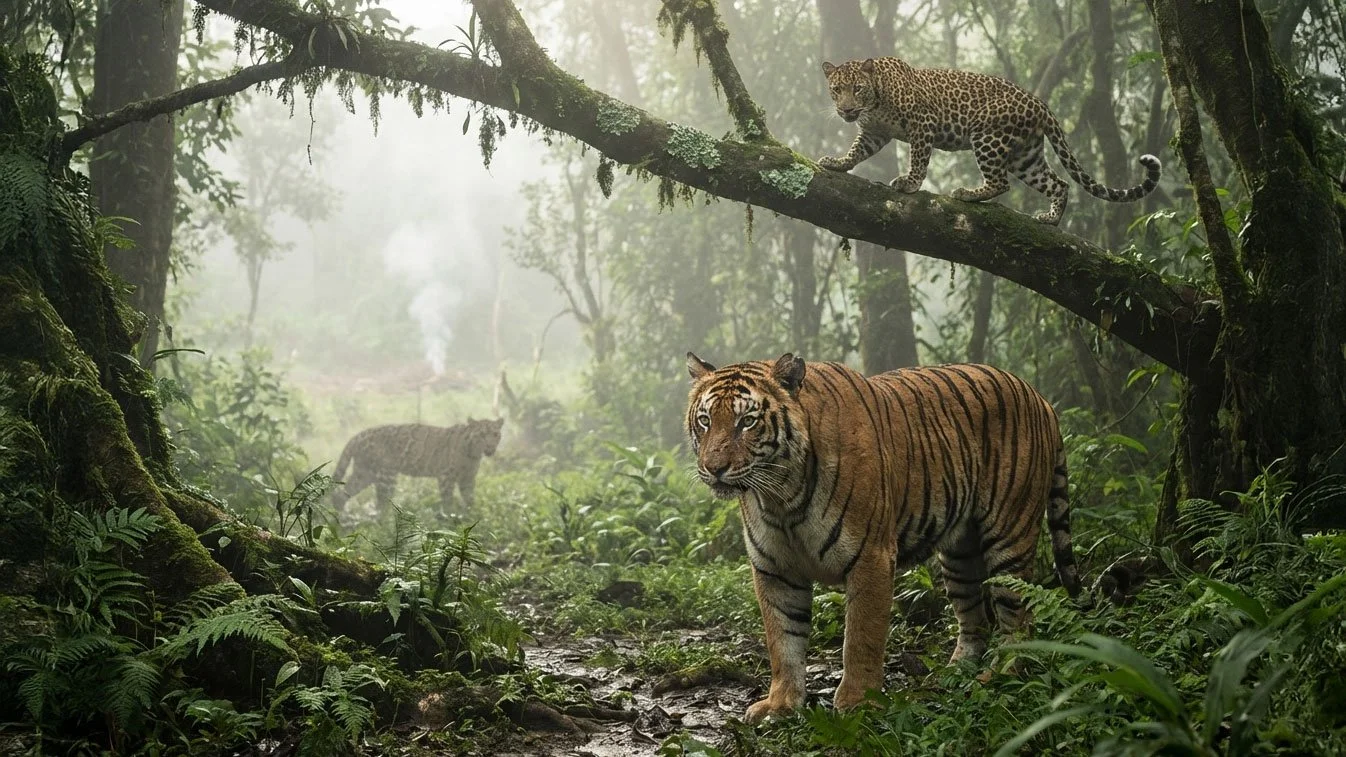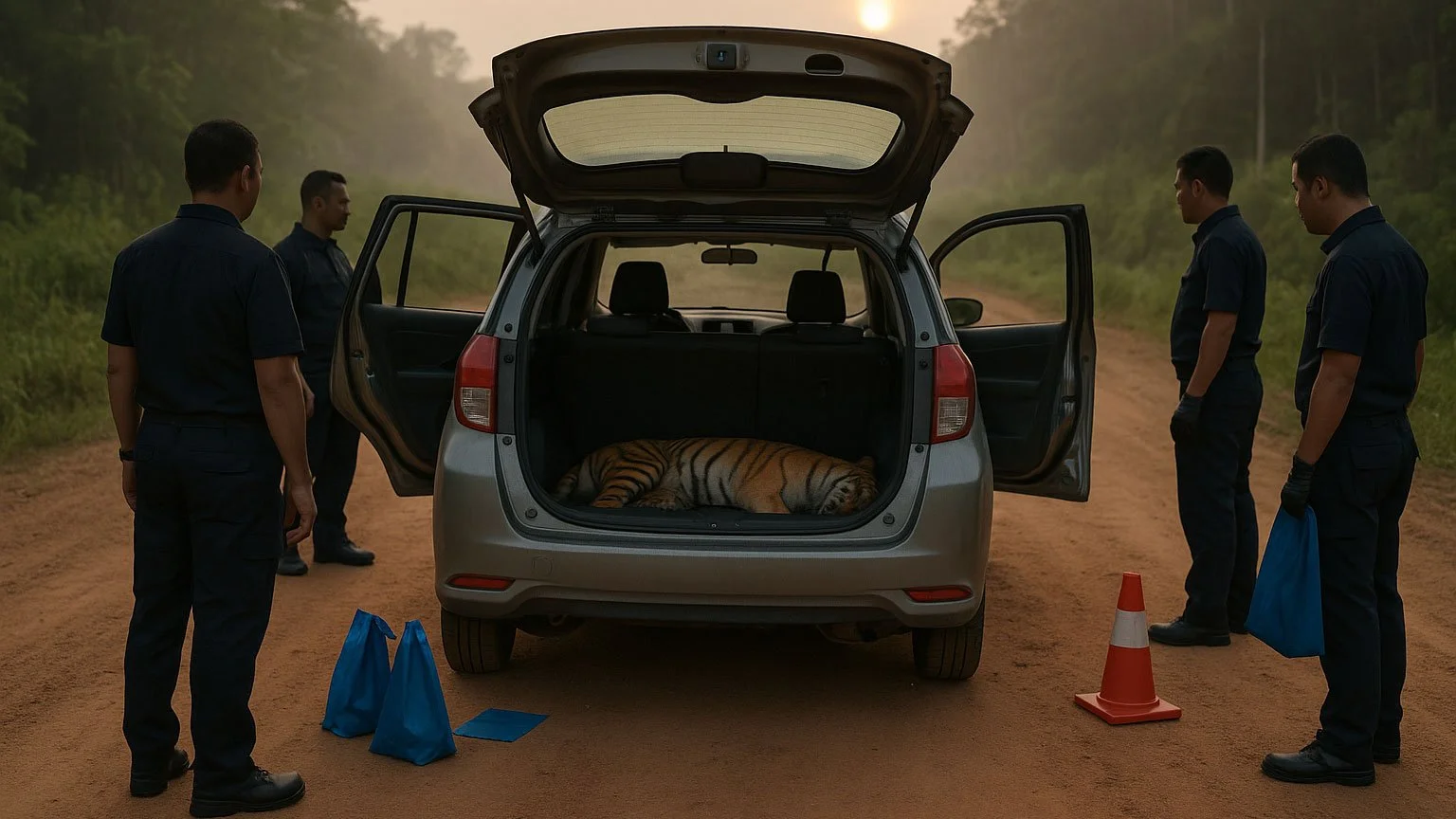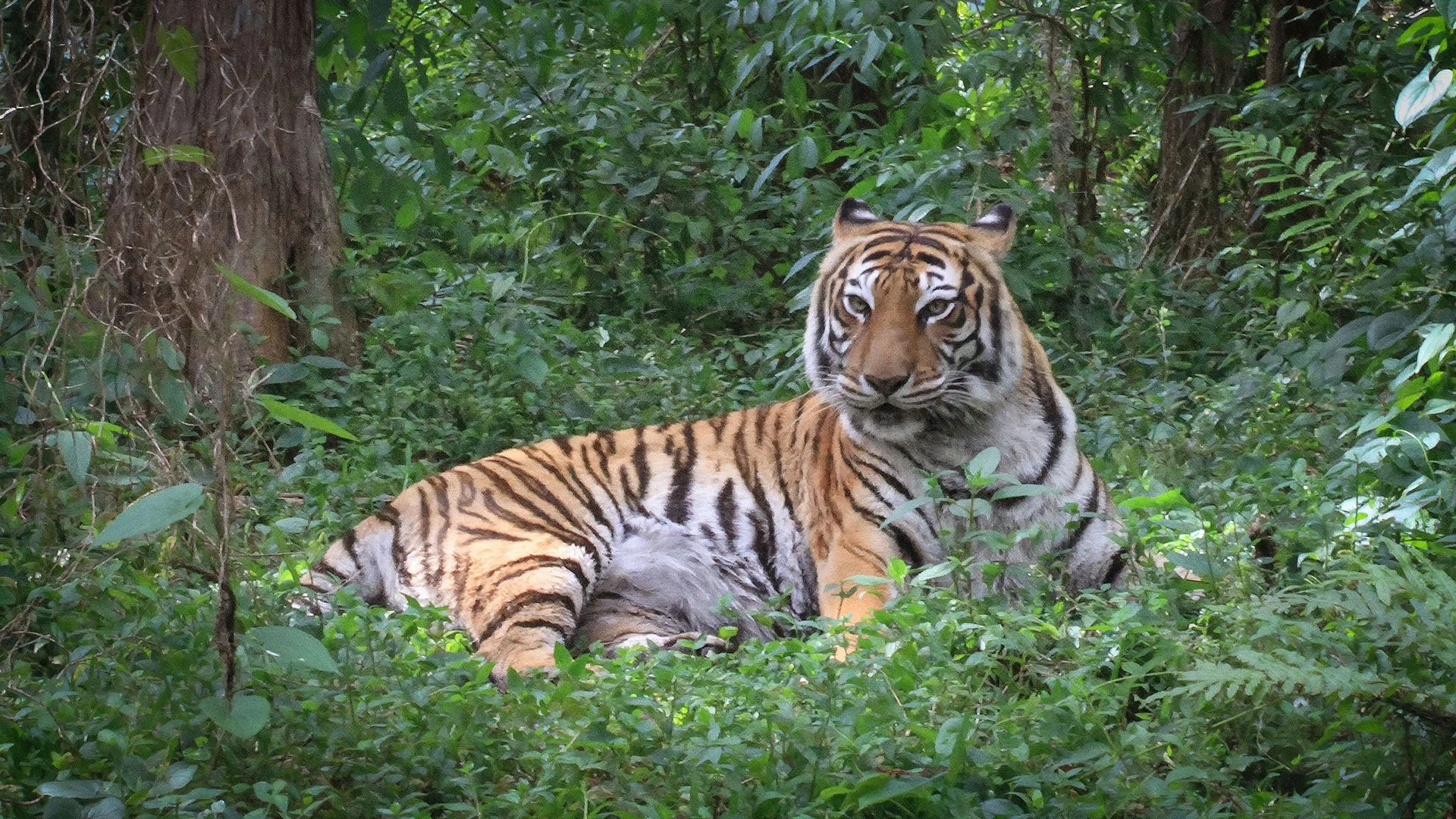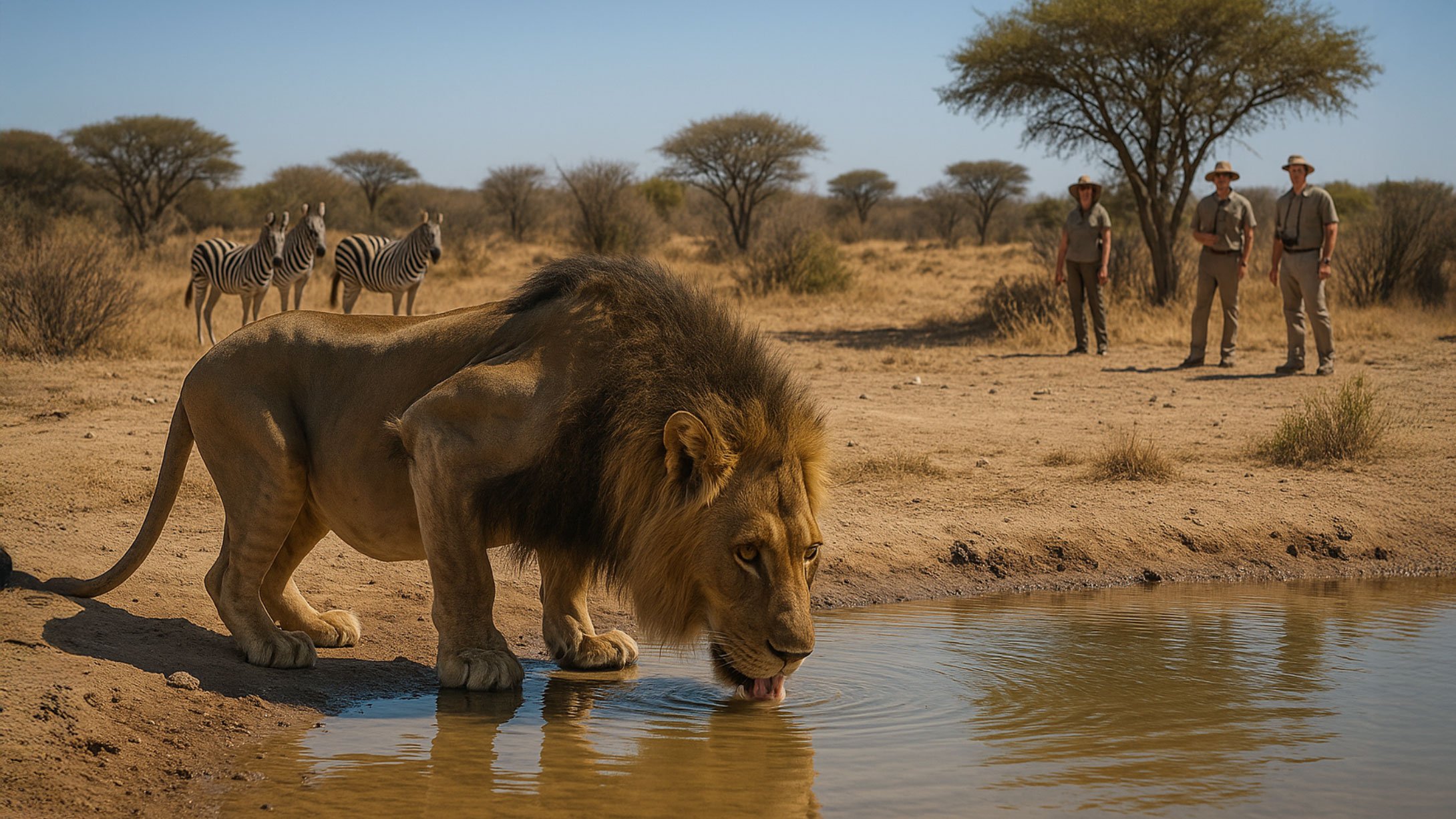Starving in Paradise: Why Thailand's Last Tigers Are Eating Badgers Instead of Deer
Deep in the emerald jungles of Thailand, a troubling story is unfolding—one that GPS collars are finally helping scientists understand. The Indochinese tigers of the Dong Phayayen-Khao Yai Forest Complex aren't thriving as they should be. Instead, they're struggling to survive, and their dinner plates tell the whole story.
The Unexpected Discovery
When conservationists from Panthera Thailand fitted GPS collars on three wild tigers earlier this year, they expected to learn about movement patterns and territory sizes. What they discovered was far more alarming: these apex predators are eating prey they should never need to hunt.
Tigers are built to take down massive animals—banteng, gaur, and sambar deer that can weigh up to 772 pounds. These large kills provide enough meat to sustain a tiger for days. But in this 1.5-million-acre forest complex, the collared tigers are instead hunting wild pigs and muntjac deer weighing as little as 22 pounds. It's the equivalent of a human trying to survive on appetizers instead of full meals.
Meet Chantra: A Tiger Eating Badgers
One tiger has taken this dietary desperation to new extremes. Chantra, named after the full moon shining during her collar fitting, has been caught eating hog badgers as her primary prey—something never before documented for wild tigers in Thailand. Scientists have also found evidence of her snacking on soft-shell turtles and water monitors.
The consequences are visible. Despite being older than her sister Pianporn, Chantra is noticeably smaller. Her home range spans just 9 square miles, less than half her sister's territory. "She could be smaller because she's less selective; she just eats everything," explains Rattapan Pattanarangsan, conservation program manager at Panthera Thailand.
An Empty Forest
The term conservationists use is chilling: "empty forest." While the trees stand tall and the canopy remains lush, the forest has been stripped of the large herbivores that should form the foundation of the food chain. Without adequate prey populations, tigers cannot maintain healthy body weights, reproduce successfully, or expand their territories.
This explains why the tiger population has remained stuck at just 20-30 individuals despite having plenty of physical space to grow. Compare this to Thailand's Western Forest Complex, where tiger numbers more than tripled between 2007 and 2023 thanks to better prey availability and habitat protection.
The Deeper Threat
The prey shortage reflects multiple threats converging on this ecosystem. Poaching—both of tigers and their prey—remains a persistent problem. Infrastructure projects like Highway 304 and a proposed dam fragment the habitat and provide "easy access" for hunters, according to Pattanarangsan.
There's another concern lurking in Chantra's unusual behavior: she has a kinked tail, which in other cat species can indicate inbreeding. With only 20-30 tigers in the population, genetic diversity is critically low, potentially threatening the long-term viability of these "last of the last" Indochinese tigers.
Hope Through Technology
The GPS collar project represents a crucial turning point. By understanding exactly what tigers are eating and how they're using their habitat, conservationists can target their efforts more effectively. The next steps include conducting threat analyses with wildlife crime experts and advocating for better habitat protection.
As Pattanarangsan notes, "If the park can reduce the threat levels, the prey population will be higher, also the tiger population will be higher." The question now is whether action will come quickly enough to save these magnificent cats from quietly vanishing into an empty forest.




















